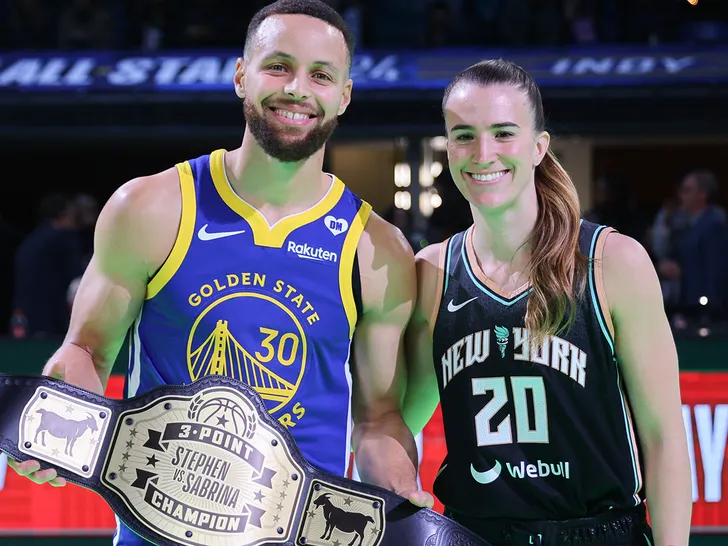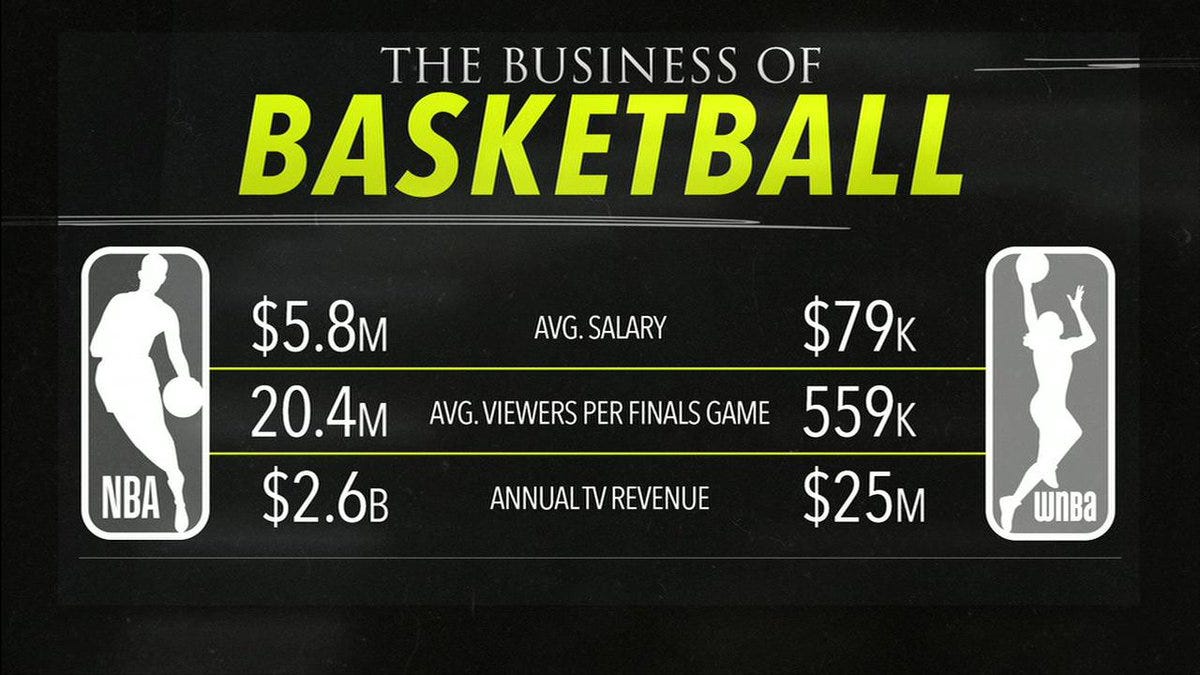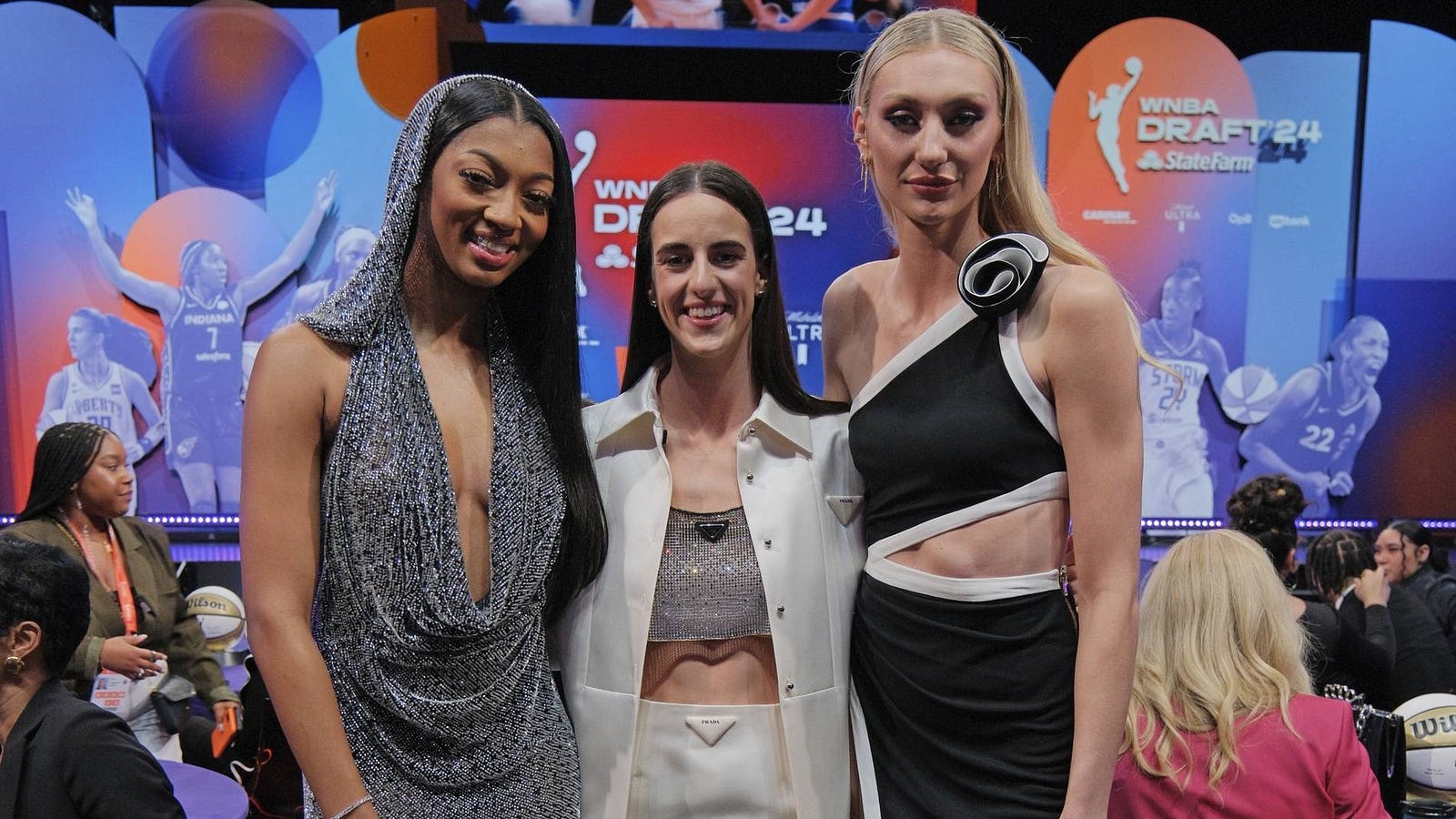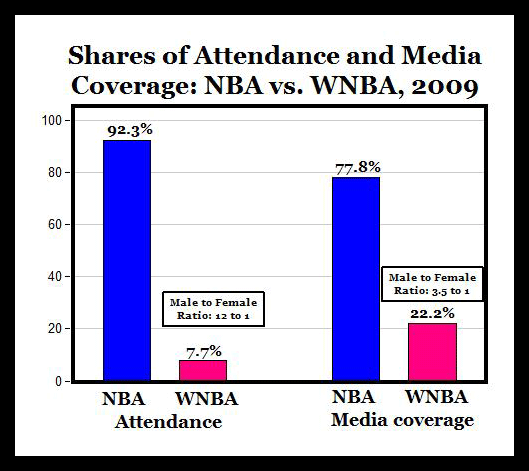The Salary Divide: Why WNBA Players Earn Less Than NBA Players

The roar of the crowd, the squeak of sneakers, the swish of a perfect netball shot — the passion for basketball transcends gender. Yet, a stark disparity exists between the salaries of WNBA and NBA players. While superstars like LeBron James command tens of millions annually, the average WNBA salary falls well short. Why the gap? It boils down to economics, or better said, fan, television, and marketers’ interest.
League Revenue: A Tale of Two Basketballs
The NBA is a global phenomenon. Broadcast rights deals in the hundreds of millions secure a massive chunk of the league’s revenue pie.

International merchandise sales are another major driver, with iconic jerseys and sneakers flying off shelves worldwide. Add to that the packed arenas, teeming with passionate fans night after night, and the NBA generates billions of dollars annually. The WNBA, while steadily growing in popularity, isn’t close to that level. Average attendance for WNBA games is a fraction of the NBA’s, with television contracts significantly smaller. Sponsorship deals are also on a different scale, with the NBA attracting major corporations eager to tap into a massive global fanbase.
Financial Losses: Is the WNBA Profitable?
The financial realities can’t be ignored. The WNBA, despite its passionate fanbase and growing popularity, has never turned a profit. This is a key factor in the salary gap.

The NBA, recognizing the potential of women’s basketball, has provided significant financial support since the WNBA’s inception. This annual subsidy, currently exceeding $15 million, helps cover operating costs like team facilities, travel, marketing, and administrative expenses. While this support is crucial for the league’s stability, it also underscores the economic disparity between the two entities. Ideally, as the WNBA continues to grow and secure its own revenue streams, the reliance on NBA subsidies will lessen.
Sharing the Pie: Different Structures
The NBA and WNBA have fundamentally different revenue-sharing agreements with their players. The NBA operates under a more established model, with players receiving 50% of all Basketball Related Income (BRI). BRI is a broad term that encompasses a variety of revenue streams, including ticket sales, national and regional television contracts, merchandise licensing, and digital media rights. This profit-sharing arrangement ensures that players have a vested interest in the league’s overall financial success. If the NBA generates more revenue, players benefit directly through a larger share of the pot.
The WNBA’s revenue-sharing model is more complex and offers players a smaller slice of the pie. Players receive a fixed percentage of league revenue, but only a portion of incremental revenue — meaning their share doesn’t automatically grow proportionately with the league’s financial gains. This structure limits the potential upside for WNBA players, even as the league itself flourishes.
WNBA Players: Not Seeking an NBA Paycheck
It’s important to dispel a misconception. WNBA players aren’t demanding identical salaries to their NBA counterparts.

They understand the economic realities of a younger league with a different fanbase and media landscape. WNBA star Kelsey Plum emphasizes that players seek a fairer share of the WNBA’s revenue stream, similar to the percentage that NBA players receive from the NBA’s much larger pot. This approach recognizes the different financial ecosystems of the two leagues while ensuring WNBA players are adequately compensated for the value they bring. Imagine a scenario where the WNBA continues to experience steady growth, with television deals and sponsorships. Under the current model, WNBA players wouldn’t automatically see a proportional increase in their salaries. A fairer revenue-sharing structure would ensure that the players’ financial rewards align with the league’s growing success.
Beyond the Numbers: Building a Sustainable Future
The WNBA is on an upward trajectory. Sponsorship deals are increasing, with brands like Nike, AT&T, and Deloitte recognizing the growing popularity of the league and the value proposition of aligning themselves with talented female athletes.

Viewership is steadily climbing, with national broadcasts on networks like ESPN and CBS Sports reaching new audiences. There’s a growing appreciation for the exceptional skills and athleticism of WNBA players like the legendary Diana Taurasi, the sharpshooting Katie Lou Samuelson, and the exciting young talent like Caitlin Clark, whose electrifying performance in college has generated significant buzz for the WNBA’s future.
Here are some key factors contributing to the WNBA’s growth:
- Marketing and Media Coverage: Increased media exposure through national broadcasts and strategic marketing campaigns can attract a wider audience and generate more interest.
- Grassroots Development: Investing in youth leagues and programs can cultivate a passionate fan base for the future of women’s basketball.
- Corporate Partnerships: Strategic collaborations with major brands can provide financial backing and broaden the WNBA’s reach.
Closing the Gap: A Win-Win for Everyone
As the WNBA flourishes, the salary gap will naturally come into sharper focus. Aligning the WNBA’s revenue-sharing model with the NBA’s successful 50–50 split could be a potential solution. This would incentivize players, further elevate the league’s profile, and ultimately benefit both players and fans.
Do you watch WNBA, or NBA games, or neither? What are your thoughts?





